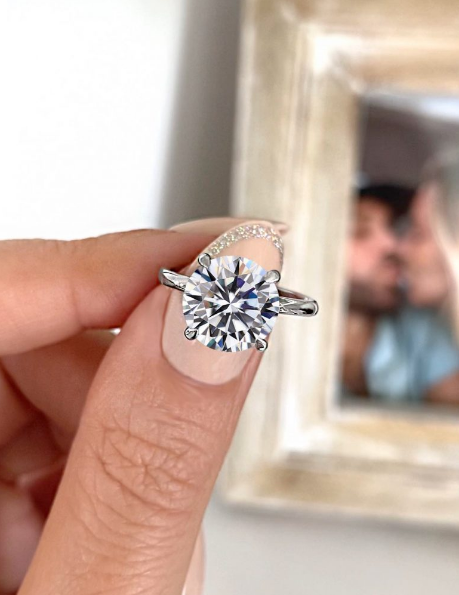There is a common misconception that moissanite, a gemstone known for its brilliance and durability, is a "fake" diamond. In fact, such a perspective can lead to an inaccurate understanding of these two unique gems. This article will explore the distinctive characteristics of both moissanite and diamonds, their differences and similarities, and the reasons why moissanite should not be simply viewed as a faux diamond.
Origin and Composition
Diamonds are naturally occurring gemstones composed almost entirely of carbon, formed under immense pressure and high temperatures in the earth's mantle over a period of 1-3.3 billion years. Moissanite, on the other hand, is primarily silicon carbide. Its natural form is incredibly rare and was first discovered in tiny quantities in a meteor crater by Dr. Henri Moissan in 1893. Today, virtually all moissanite gems are lab-created, which ensures their ethical sourcing and environmental friendliness.
Physical Properties
In terms of hardness, diamonds are renowned for being the hardest substance on earth, ranking 10 on the Mohs hardness scale. Moissanite is not far behind, with a rating of 9.25, making it suitable for everyday wear as well.

Moissanite is known for its higher refractive index (2.65) compared to diamonds (2.42), which means it exhibits more fire and brilliance - that's the sparkle you see when light enters the stone.
Diamonds, on the other hand, are prized for their clarity and can range in color from colorless to yellow or even blue. Moissanites are almost always colorless or near-colorless.
Affordability and Value
It's no secret that diamonds carry a high price tag, influenced by factors like size, cut, color, and clarity. Moissanite is far more affordable, costing a fraction of the price of a diamond of similar size and quality. This makes moissanite a popular choice for those seeking a budget-friendly, yet beautiful gemstone.
However, diamonds hold a long-standing cultural and financial value. radiant lab grown diamond.They are often seen as an investment and hold their value over time. Moissanite doesn't have the same resale value, but it is highly valued for its beauty and ethical sourcing.
Conclusion: Moissanite is Not a "Fake Diamond"
In conclusion, categorizing moissanite as a "fake" diamond does a disservice to this unique gemstone. While it shares some physical properties with diamonds and is often used as a diamond alternative, moissanite is a gemstone in its own right with its own distinct features. It offers an ethically sourced, affordable, and dazzling alternative for individuals seeking a durable and brilliant stone. Rather than viewing moissanite and diamonds as a genuine-fake dichotomy, it is more appropriate to appreciate them as unique choices for different needs and preferences.
